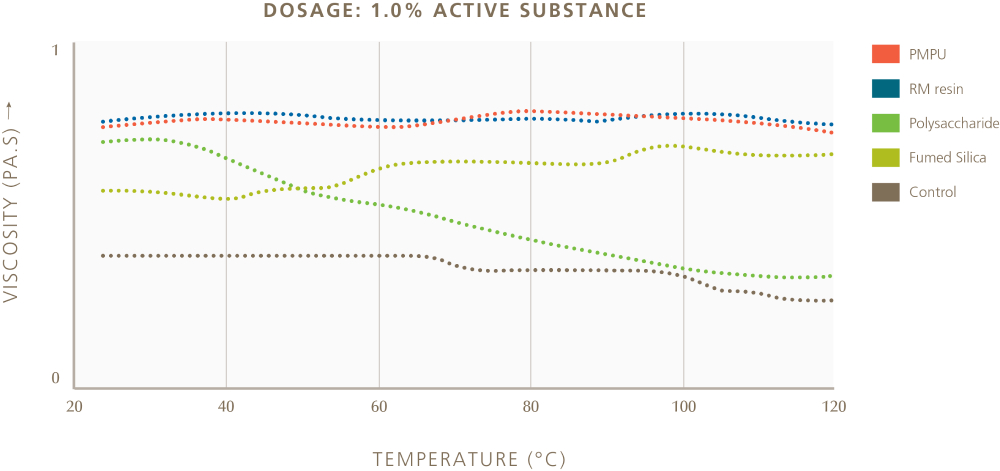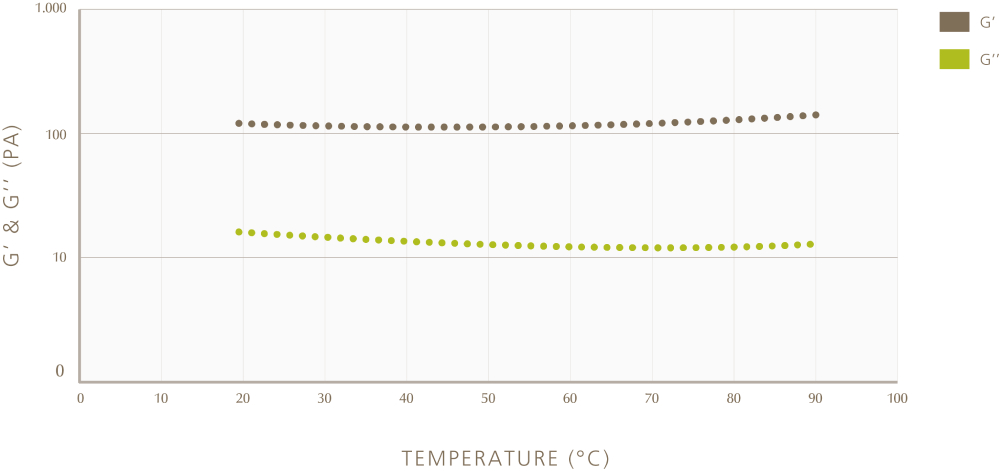
MFC and its resistance to heat: Can it create opportunities?
Ole Martin Kristiansen | May 23, 2017
Microfibrillated cellulose is an interesting rheology additive in several aspects due to its multi-functionalities. It can create pseudoplastic behaviour in flowing systems, prevent cracking of curing systems, improve barrier properties of cured systems, just to name a few opportunities. However, one of its less known characteristics is its ability to perform under a range of different temperatures, without losing the ability to provide the desired viscosity profile. I will in this week’s post focus on how MFC performs at high temperatures in the liquid phases and how it performs in comparison to more well-known rheology additives.
Importance of stable viscosity profiles and how MFC can help
There are several application fields which are in need of stable viscosity profiles of their products, both during application and under curing. For instance, when having a delicate rheology system based on highly pseudoplastic behaviour, keeping these flow characteristics is essential. Aspects like anti-sag and control of the coating thickness is crucial when thinking of, for instance, the vertical application of these products, also during hot weather conditions . Many polysaccharides for instance can see great variation in viscosity profile over wide temperature ranges (40-120 ⁰C), while products like fumed silica show higher stability towards heat.

Figure 1: Viscosity profile of various rheology modifiers under different temperatures (courtesy of European Coatings Journal, 12/2010)
Microfibrillated cellulose shows many of the same heat stable characteristics as the fumed silica. Its three-dimensional network (physically based, as with the fumed silica particles) shows high resistance to heat and can give the desired effects on rheology under an array of temperatures.

Figure 2: Viscosity profiles of MFC under different temperatures (Exilva MFC from Borregaard, 2017)
In formulations, MFC can perform along the same lines as the more known RM (Rheology Modified) resins, PMPU (Polyether-Modified Polymeric Urea) and fumed silica. It has clear advantages over other polysaccharide rheology additives and compared to the dry powder fumed silica, MFC can also improve material handling during the production (no dust particles, and readily activated).
MFC also can be more effective than the fumed silica on thickening effect in highly polar systems, giving improved performance.MFC clearly shows that it has potential to perform on rheological properties, in line with the levels typically associated with very high performing polymeric rheological additives, or fumed silica. As MFC is now commercially available, this new additive can quickly be evaluated as an alternative to the established technologies in systems where high temperature stability is needed.
